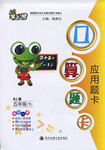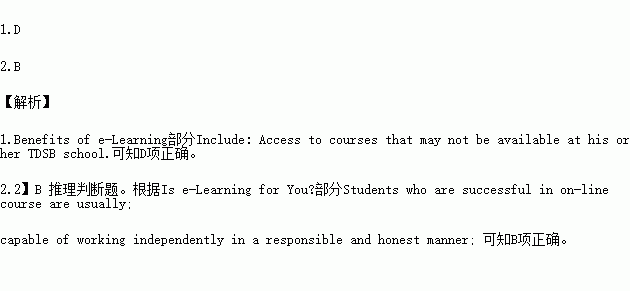题目内容
阅读理解
请阅读下列短文,从短文后各题所给的A、B、C、D四个选项中,选出最佳选项,并在答题卡上将该项涂黑。
A
|
Day school Program Secondary students across Toronto District School Board(TDSB) are invited to take one or two e-Learning courses on their day school timetable. Students will remain on the roll at their day school. The on-line classroom provides an innovative relevant and interactive Learning environment. The courses and on-line classroom are provided by the Ministry of Education These on-line courses Benefits of e-Learning Include: Is e-Learning for You? Students who are successful in on-line course are usually; Students need to spend at least as much time with their on-line course work as they would in a face-to-face classroom course. |
1.E-Learning courses are different from other TDSB courses in that .
A. they are given by best TDSB teachers.
B. they are not on the day school timetable.
C. they are not included on students’ reports.
D. they are an addition to TDSB courses.
2.What do students need to do before completing e-learning courses?
A. To learn information technology on-line.
B. To do their assignments independently.
C. To update their mobile devices regularly.
D. To talk face to face with their teachers.
 开心蛙口算题卡系列答案
开心蛙口算题卡系列答案
 are taught by TDSB secondary school teachers
are taught by TDSB secondary school teachers
